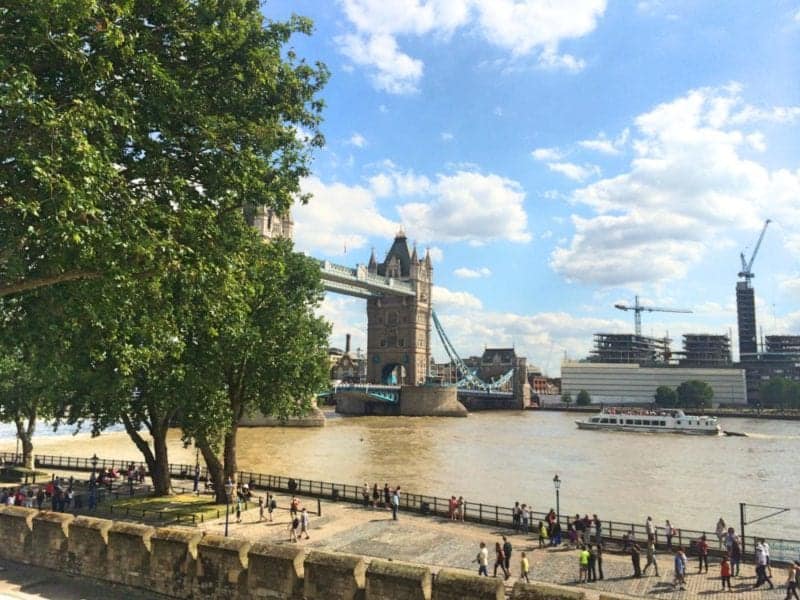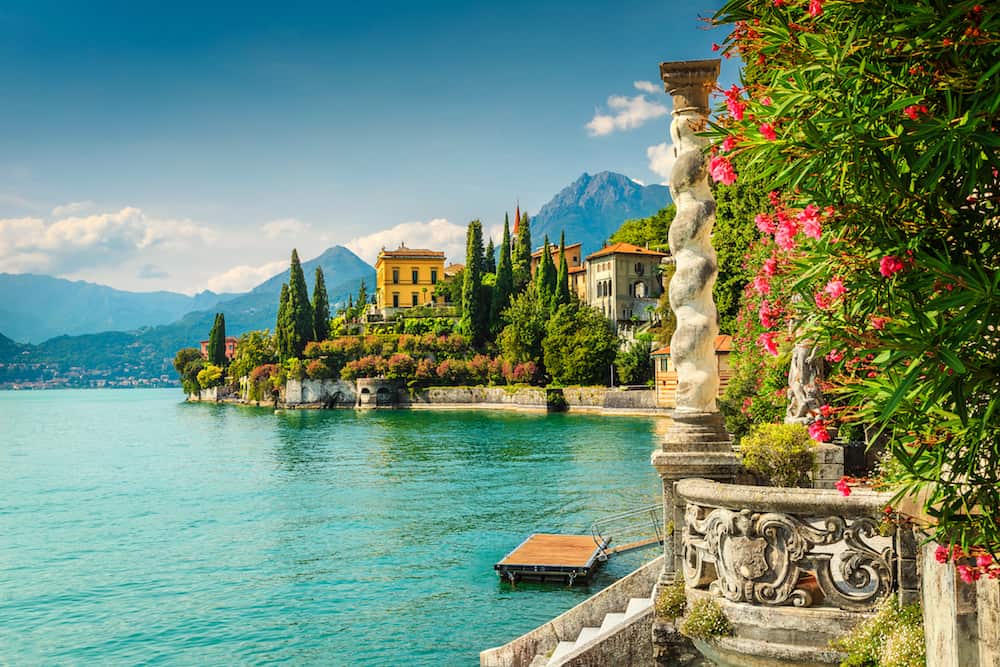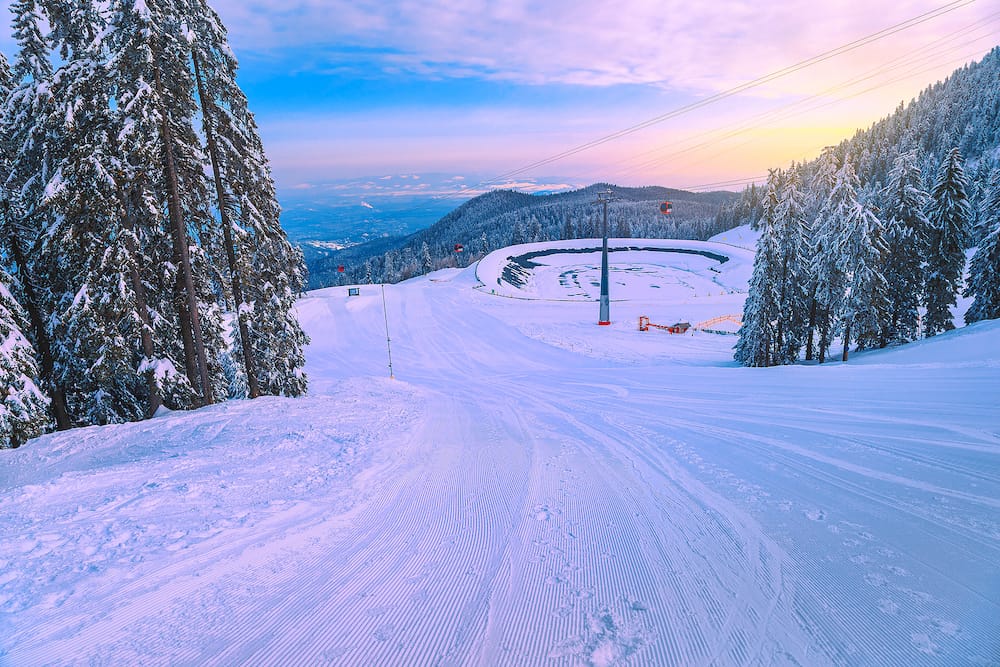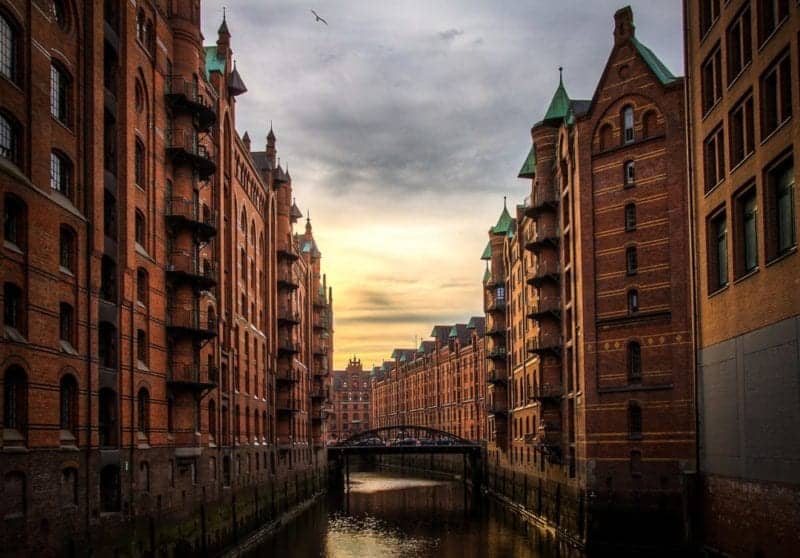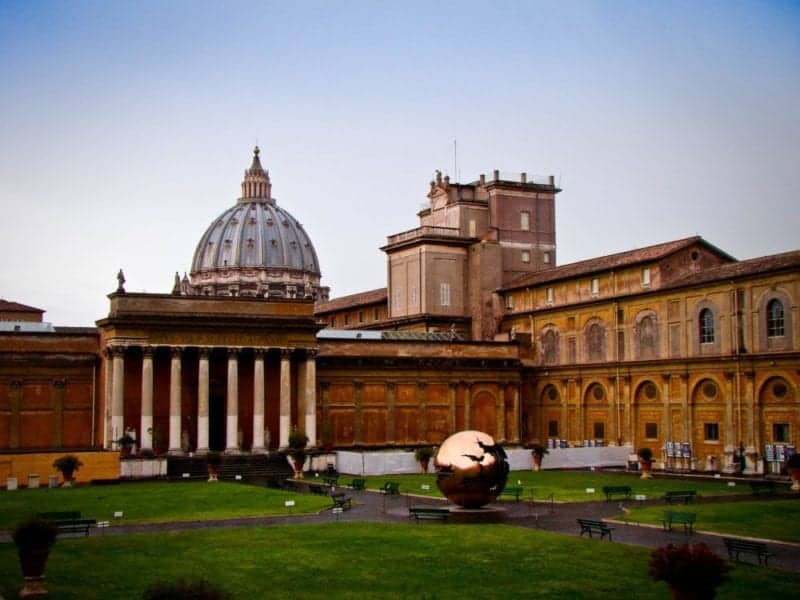Most Underrated Places In Europe
Exploring Europe offers a unique blend of history, culture, and diverse landscapes. While popular destinations are well-known, many lesser-known places in Europe also offer rich experiences. This guide highlights underrated European locales, revealing hidden gems often overshadowed by more frequented spots.
Europe, a living historical tapestry, features iconic landmarks like the Roman Colosseum and the Eiffel Tower, alongside lesser-known but equally captivating sites. Its cultural diversity is remarkable, offering a range of experiences from tasting local cuisines like paella in Spain to exploring the fjords of Norway. Europe’s architecture spans Gothic to modernist styles, adding to its allure.
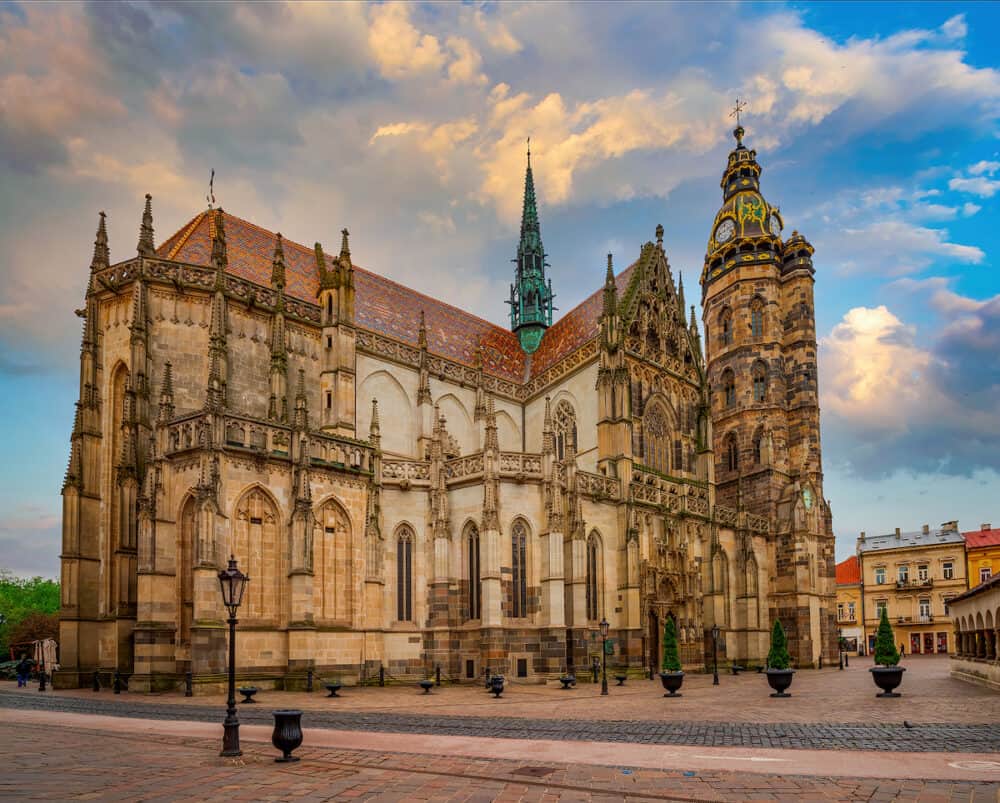
Venturing off the beaten path can uncover hidden treasures. For instance, exploring quieter areas of Portugal’s Algarve revealed secluded beaches, charming cafes, and breathtaking views, often missed in typical tourist itineraries. Such experiences underscore the value of exploring beyond well-trodden paths.
In summary, traveling through Europe is not just about visiting popular destinations; it’s about immersing in the continent’s rich tapestry and discovering unique, less-explored locales that offer authentic experiences and a deeper understanding of Europe’s heritage and beauty.”
Plan your trip
Save on fees abroad with the Wise Card—use it at ATMs, restaurants, and for flights or hotels in over 150 countries. Manage 40+ currencies in real-time with the Wise app.
Need Help Planning?
- Cheap Flights: Find the best deals.
- Accommodation: From hostels to luxury stays.
- Car Rental: Affordable options worldwide.
- Sightseeing Tours: Explore without breaking the bank.
- Travel Adapter: One adapter for all your needs.
- Travel Insurance: Don’t risk it—stay covered.
This post includes affiliate links. Read my full disclosure and content policy.
Matera, Italy:
Matera, located in the southern region of Basilicata, Italy, is a remarkable and historically significant place that has remained an underrated destination in Europe compared to more famous Italian cities like Rome, Florence, and Venice.
Why is Matera underrated?
Matera was hidden from international tourists until recent years, which has allowed it to retain its authentic character and escape the crowds, making it a more intimate and immersive travel experience.
Matera was associated with poverty and poor living conditions for much of its history, which led to its reputation as the “Shame of Italy.” However, the city has since transformed itself, and its historical significance is now celebrated.
What is it like?
Matera is renowned for the “Sassi di Matera,” ancient cave dwellings in limestone cliffs. These UNESCO World Heritage Site dwellings, some of Italy’s earliest settlements, showcase unique troglodyte architecture.
Today, many are repurposed into hotels, restaurants, and shops. Matera’s rich history reflects diverse cultural influences from Greeks, Romans, Byzantines, and Arabs, evident in its architecture, cuisine, and customs.
The city’s location on a rocky plateau provides stunning views of the surrounding landscape, including hills, vineyards, and valleys.
Things to do in Matera:
- Explore the Sassi:
Wander through the intricate alleyways of the Sassi, explore cave churches, and marvel at the ancient architecture. The “Casa Grotta di Vico Solitario” is a well-preserved cave house that provides insight into the historic way of life.
- Visit Cave Churches:
The city has numerous cave churches, including the stunning Chiesa di San Pietro Caveoso and the rock-hewn crypts of Madonna delle Virtù.
- Local Cuisine:
Savour traditional Basilicata dishes at local restaurants. The region is known for its pasta, bread, olive oil, and wines. Try the local specialty, “pane di Matera,” a unique bread with a crispy crust and soft interior.
- Sunset Views:
Watch the sunset from one of the viewpoints in Matera, like the Piazzetta Pascoli, for a soft and memorable experience.
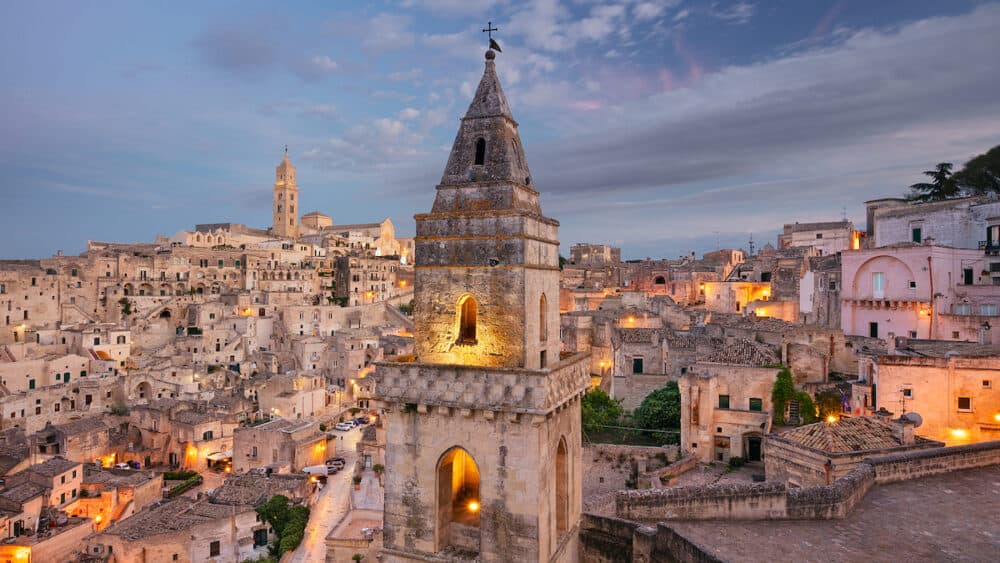
Tallinn, Estonia:
Tallinn, the capital of Estonia, is charming and one of the most underrated cities in Europe that tourists often overlook in favour of more well-known European capitals.
Why Tallinn is underrated:
Due to its distance, Estonia is one of the Baltic States. It is somewhat isolated from the traditional European tourist circuit. It is a relatively small city compared to major European capitals, which often leads to its omission from grand European itineraries.
While Tallinn’s authenticity and historical charm are highly appealing, the city’s lesser-known status can be attributed to it not being as “discovered” as more famous European cities.
What Tallinn is like:
Tallinn’s Old Town is a beautifully preserved medieval city centre and a UNESCO World Heritage site. Its narrow cobblestone streets, historic buildings, and well-preserved city walls transport visitors back in time.
It showcases a mix of architectural styles, including Gothic, Baroque, and Soviet-era structures, creating a unique urban landscape.
The contrast between the medieval Old Town and the modern city centre is striking. Tallinn is located on the Baltic Sea, offering picturesque views and the opportunity to enjoy seaside activities.
Things to do in Tallinn:
- Explore the Old Town:
Wander through Tallinn’s Old Town to discover its historic beauty and visit landmarks like Toompea Castle, Alexander Nevsky Cathedral, and the Town Hall Square. The viewpoints atop Toompea Hill offer panoramic views of the city.
- Tallinn Song Festival Grounds:
Explore this outdoor venue famous for the Estonian Song Festival, an event of national pride and cultural significance.
- Kadriorg Palace and Park:
Stroll through the picturesque Kadriorg Park and visit the Kadriorg Palace, built by Peter the Great. The palace now houses the Kadriorg Art Museum.
- Tallinn’s Maritime Attractions:
Explore Tallinn’s maritime history at the Seaplane Harbour Museum and check out the historic seaplanes and submarines.
- Tallinn’s Creative Scene:
Tallinn has a growing creative and tech scene where we can explore modern art galleries, design shops, and innovative startups in the Telliskivi Creative City.
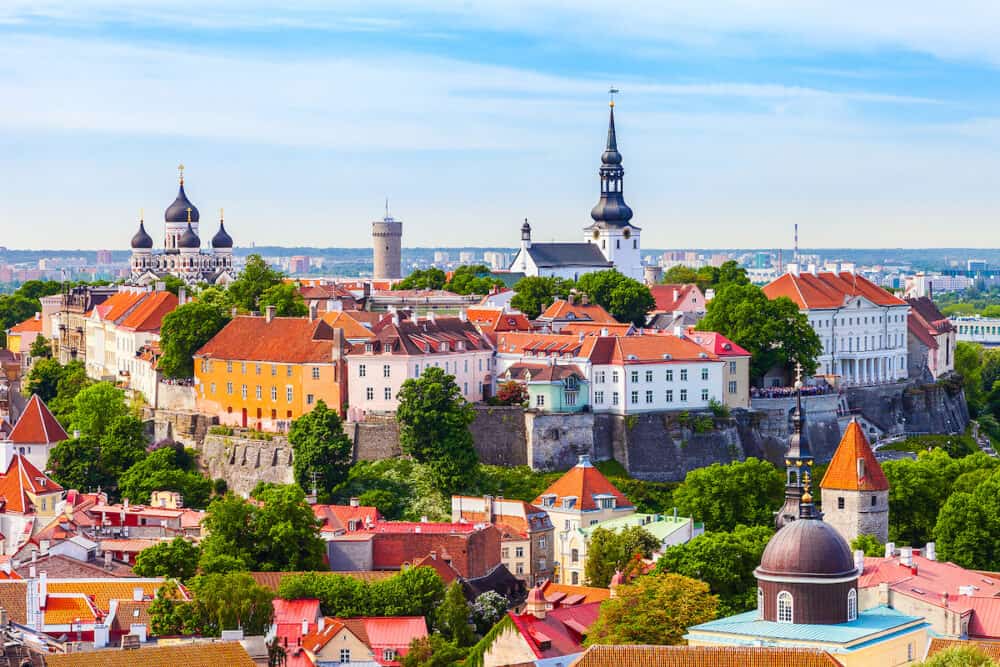
Azores, Portugal:
The Azores, an archipelago of nine volcanic islands in the North Atlantic Ocean, are one of Europe’s most underrated and often overlooked travel destinations. There are many reasons for this under-the-radar status. Still, this lack of mass tourism makes the Azores a unique and captivating place.
Why are the Azores underrated?
The Azores are relatively isolated, situated in the middle of the Atlantic Ocean, thousands of kilometres from mainland Europe.
This isolation can deter casual tourists, but it’s a big part of what makes the islands so pristine and unspoiled. It has yet to be aggressively marketed as a tourist destination, and more awareness about the archipelago among travellers still needs to be created.
What the Azores are Like:
The Azores are known for their breathtaking landscapes, including lush green hills, volcanic craters, pristine lakes, and towering cliffs. They are also seen as a highly underrated European beach destination.
The islands are a paradise for outdoor enthusiasts and nature lovers. Thanks to their volcanic origins, they are dotted with hot springs, geysers, and thermal baths. The Furnas area on São Miguel Island is famous for its natural hot springs and bubbling geysers.
The Azores are a fantastic spot for diving and whale watching, with a high likelihood of spotting various whale species, including sperm and humpback whales. The islands have a unique cultural heritage, influenced by Portuguese, Azorean, and other European and maritime traditions.
Things to Do in the Azores:
- Hiking and Outdoor Activities:
The Azores are a hiker’s paradise with numerous trails offering stunning views. Try the hike around Sete Cidades on São Miguel or explore the verdant landscapes of Flores Island.
- Whale Watching:
Join a whale-watching tour to spot majestic marine creatures in their natural habitat. São Miguel and Pico are among the best islands for this activity.
- Thermal Baths:
Relax in Furnas’s geothermal baths and springs or the Caldeira Velha on São Miguel.
- Volcanic Craters and Lakes:
Explore mesmerizing volcanic craters and lake landscapes, such as Lagoa do Fogo, Lagoa das Sete Cidades, and Lagoa das Furnas.
- Island-Hopping:
Explore multiple islands to experience their individual charm and unique landscapes.
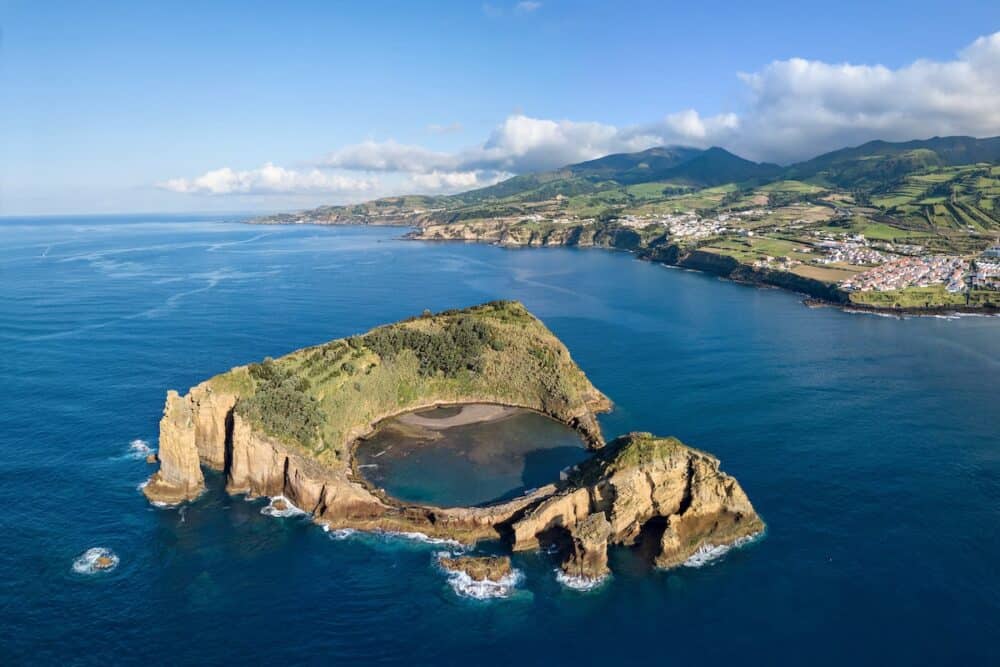
Transylvania, Romania:
Transylvania, located in the heart of Romania, is steeped in history, folklore, and stunning natural beauty. While it’s becoming more recognized as a tourist destination, it remains one of the most underrated places in Europe to live and travel, especially in comparison to Western European destinations.
Why is Transylvania underrated?
Transylvania’s association with Bram Stoker’s Dracula has contributed to its mysterious and somewhat ominous reputation. While this draws some travellers, it also keeps others away, especially those who might not realize that the Dracula legend is mainly fictional.
Some travellers might overlook Transylvania because it’s in Eastern Europe, and there’s a lingering misconception that this part of Europe is less developed or unsafe.
In reality, Transylvania is a safe and welcoming destination. The region’s association with vampires and castles sometimes overshadows its rich history, stunning landscapes, and cultural heritage.
What is Transylvania like?
Transylvania is known for its fascinating history, with influences from Roman, Hungarian, Saxon, and Romanian cultures. Its historic cities and towns boast well-preserved medieval architecture and fortifications.
Transylvania has diverse landscapes, including the stunning Carpathian Mountains, rolling hills, lush forests, and serene valleys. The region is a paradise for nature enthusiasts. This country is a melting pot of cultures, and its mix of traditions, music, and festivals reflects this diversity.
Things to Do in Transylvania:
- Bran Castle:
Often called “Dracula’s Castle,” this imposing fortress near Brașov is a must-visit. While it’s not directly related to Vlad the Impaler (the inspiration for Dracula), it offers a glimpse into medieval life.
- Sibiu:
Explore the charming town of Sibiu, known for its well-preserved old town, colourful houses, and the Brukenthal National Museum.
- Hiking and Nature:
Hike in the Carpathian Mountains, with options ranging from leisurely strolls to challenging treks. Explore the Piatra Craiului National Park or the Retezat National Park for pristine natural beauty.
- Cluj-Napoca:
Visit Cluj-Napoca, a vibrant city known for its art, music, and cultural scene.
- Peles Castle:
Journey to Peleș Castle in the picturesque town of Sinaia. This Neo-Renaissance castle is a masterpiece of architecture and design, set against lush forests.
- Medieval Towns:
Stroll through other charming medieval towns like Sighișoara, with its well-preserved old town and a historic clock tower, and Brasov, known for its Black Church and medieval fortifications.
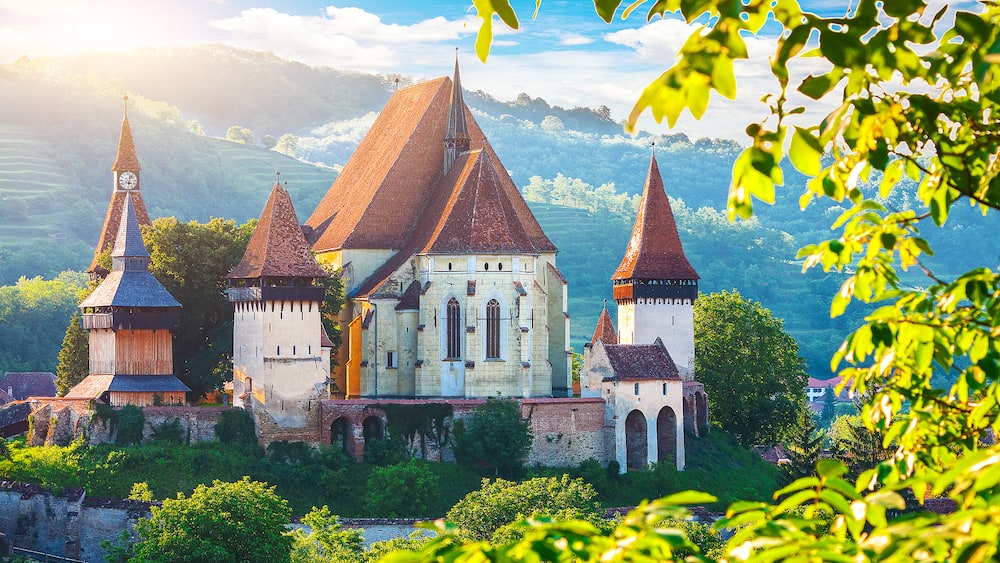
Plitvice Lakes National Park, Croatia:
Plitvice Lakes National Park, located in Croatia, is one of Europe’s hidden treasures. Despite its stunning natural beauty and unique features, it remains somewhat underrated. The reasons for its relative obscurity and what makes it unique are worth exploring.
Why is Plitvice Lakes National Park underrated?
Plitvice Lakes National Park is tucked away in the heart of Croatia, in a less-travelled part of Europe. It’s not as easily accessible as some more popular European destinations. Its Adriatic coast often steals the spotlight, drawing travellers to cities like Dubrovnik and Split.
What is Plitvice Lakes National Park like?
The park is renowned for its spectacular cascading waterfalls, crystal-clear lakes, and lush green forests. Its primary feature is the interconnected system of 16 terraced lakes and numerous waterfalls, all connected by a series of cascades.
The crystal clear water creates striking azure and green colours that change with the seasons and sunlight.
Plitvice is home to diverse flora and fauna, including various species of birds, fish, and mammals. The park offers a network of well-maintained walking trails, allowing visitors to explore the park’s beauty at a leisurely pace.
Things to Do in Plitvice Lakes National Park:
- Hiking:
There are numerous hiking trails of varying lengths and difficulties. Some tracks take us along the edge of the lakes. In contrast, others lead to elevated viewpoints for panoramic vistas of the park’s waterfalls.
- Boating:
Take a boat ride on Lake Kozjak, the largest Lake in the park, offering a unique perspective on the waterfalls and surrounding landscapes.
- Photography:
Plitvice is a paradise for photographers. The constantly changing play of light and water creates endless opportunities for capturing stunning images.
- Wildlife Watching:
Keep an eye out for the diverse wildlife in the park, including birds, deer, and, occasionally, bears. Birdwatching is especially popular.
- Swimming:
Swimming in the park’s lakes is allowed during summer, providing a refreshing and natural experience.
- Picnicking:
Enjoy a picnic amid the stunning natural surroundings, taking in the serenity of the lakes and waterfalls.
- Exploring Caves:
Nearby caves like Baračeve špilje offer opportunities to explore underground formations.
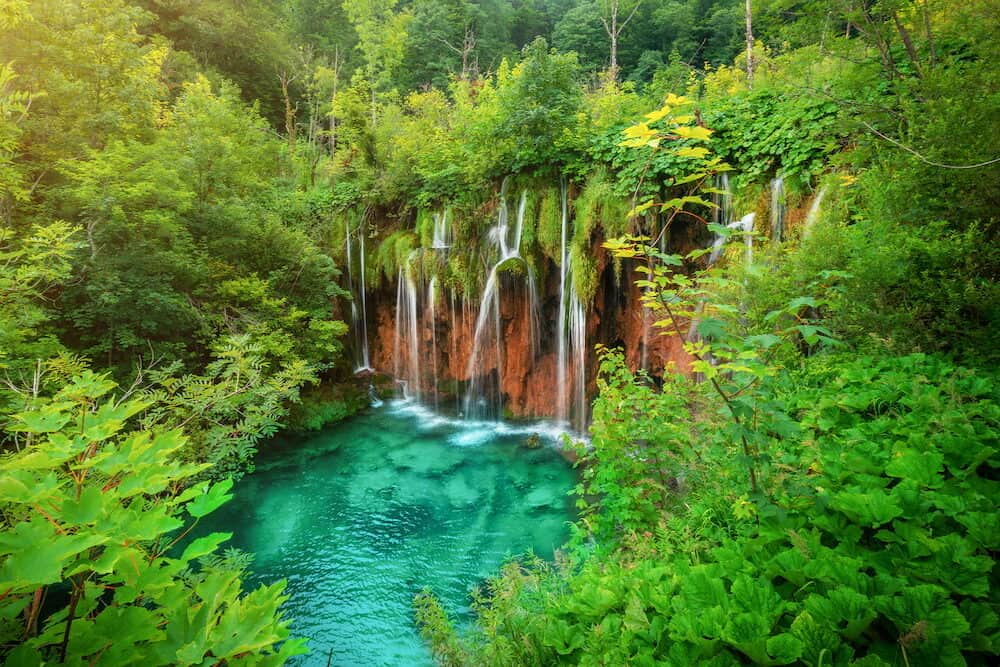
Hallstatt, Austria:
Hallstatt is a stunning village in the Austrian Alps in the Salzkammergut region. While it has gained popularity in recent years, it is still considered one of the underrated cities in Europe and in the broader context of the continent’s tourism.
This can be attributed to several factors, including its remote location and a relatively low profile compared to other European destinations.
Why is Hallstatt underrated?
Hallstatt is situated in a remote part of Austria, which makes it less accessible compared to major European cities. The village is relatively small, with only limited accommodations and amenities.
This exclusivity can make it feel like an “off-the-beaten-path” destination. Still, it can also be seen as a drawback for travellers who prefer more options.
What is Hallstatt like?
Hallstatt is renowned for its breathtaking natural beauty. Surrounded by the Dachstein Alps and nestled beside the pristine Hallstätter See (Lake Hallstatt), the village offers stunning vistas of the mountains and the Lake.
It is steeped in history, and its well-preserved architecture and traditions reflect its long heritage. The charming old town features cobblestone streets, pastel-painted buildings, and traditional Austrian houses.
Hallstatt’s salt mines are a significant part of its history. Visitors can explore the salt mines and learn about the region’s long history of salt production.
Things to Do in Hallstatt:
- Scenic Walks:
Take leisurely walks around the village, which offers picturesque views of the Lake and surrounding mountains. The viewing platform, Skywalk Hallstatt, provides a stunning panoramic view.
- Hallstatt Salt World:
Visit the Hallstatt Salt World to learn about the historical importance of salt mining in the region. The underground salt lake is a unique feature to explore.
- Dachstein Ice Cave:
The Dachstein Ice Cave, located nearby, is another fascinating attraction. Guided tours lead visitors through a world of intricate ice formations.
- Boat Trips:
Enjoy a boat ride on Lake Hallstatt to soak in the serene waters and stunning landscapes.
- Alpine Hiking:
The region offers excellent hiking opportunities, with trails suitable for various fitness levels. Explore the alpine meadows, forests, and peaks.
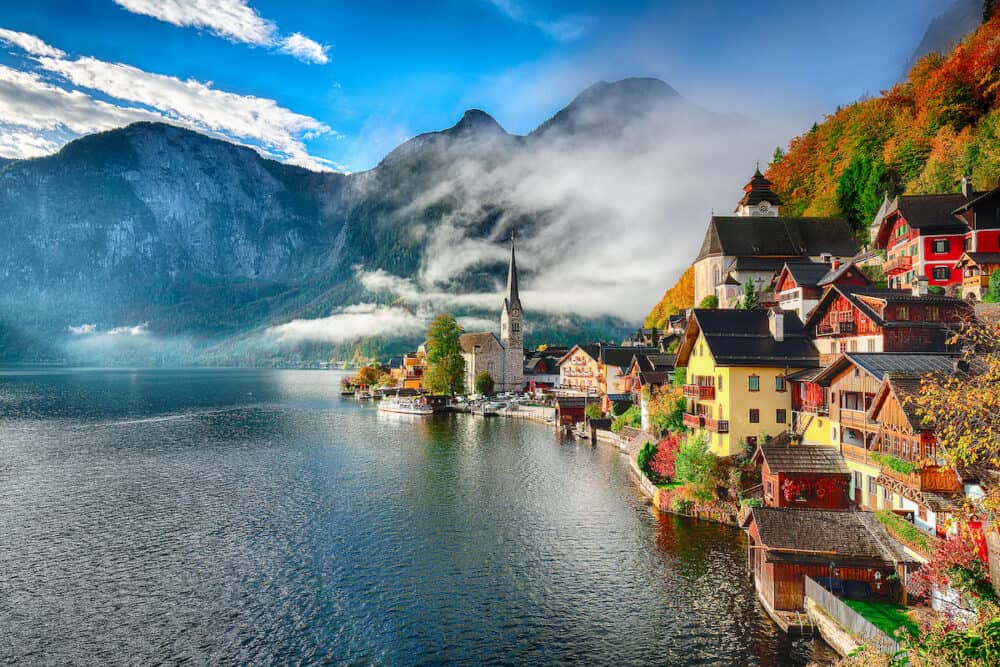
Bled, Slovenia:
Bled, located in the heart of Slovenia, is a hidden gem in Europe that offers a captivating blend of natural beauty, cultural heritage, and outdoor activities.
While it’s gaining recognition as a tourist destination, it remains one of the most underrated European cities compared to others on the continent.
Why is Bled underrated?
Bled is a relatively small town compared to major European cities. Its size might deter travellers who prefer urban destinations with many amenities and attractions. Bled is nestled in the Julian Alps, slightly away from the traditional European tourist routes.
What is Bled Like?
Renowned for its stunning natural beauty, with Lake Bled as its centrepiece, the Lake is surrounded by the Julian Alps. Its iconic church is perched on a tiny island in the middle of the Lake.
The town features a picturesque old castle perched on a hill, charming buildings, and a serene lakeside promenade. I recommend exploring local traditions and tasting authentic Slovenian cuisine.
Things to do in Bled:
- Bled Castle:
Visit Bled Castle, perched on a hill overlooking the Lake. The castle offers historical insights and breathtaking panoramic views of the surrounding landscapes.
- Pletna Boat Ride:
Take a traditional Pletna boat to Bled Island and ring the “wishing bell” in the church for good luck. The journey itself is a unique experience!
- Hiking:
Explore the picturesque Vintgar Gorge, a short drive from Bled, with wooden walkways that allow us to follow the Radovna River through the stunning canyon.
- Bled Cream Cake:
Savour a slice of Bled’s famous cream cake at a local café. This delectable dessert is a must-try in the region.
- Swimming and Watersports:
Enjoy swimming in the crystal-clear waters of Lake Bled with the option of other water sports.
- Bled Island:
Explore Bled Island and visit the Church of the Assumption, which dates back to the 17th century.
- Cycling:
Rent a bike and explore the scenic trails around Bled and the nearby Bohinj area.
- Triglav National Park:
Venture into Triglav National Park for more outdoor activities, including hiking, mountain biking, and canyoning.
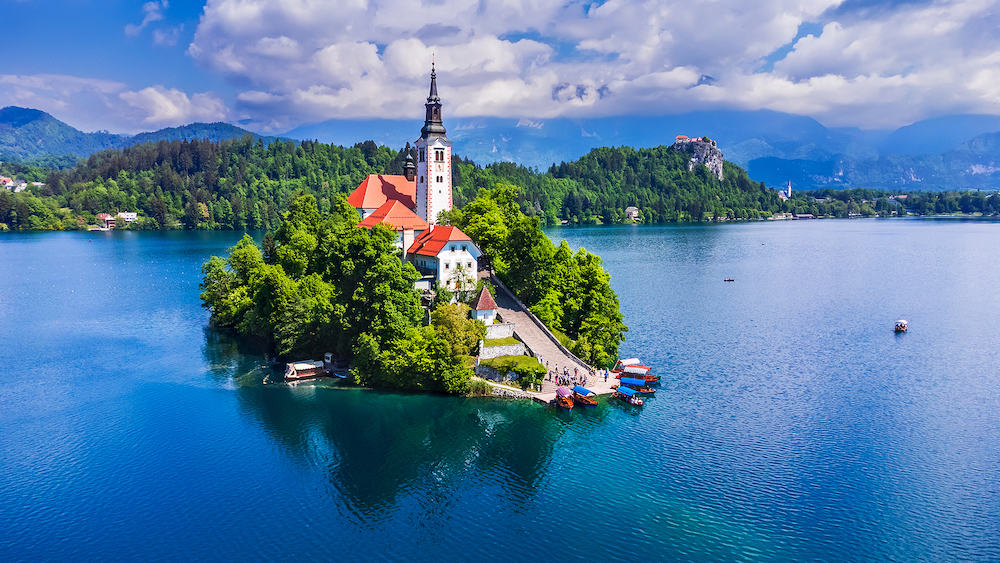
Faroe Islands, Denmark:
The Faroe Islands, an autonomous territory within the Kingdom of Denmark, are extraordinary and not often considered a travel destination. It is one of Europe’s most underrated places for several reasons.
Why are the Faroe Islands underrated:
The Faroe Islands are situated in the North Atlantic Ocean, far from continental Europe, and such a remote location can deter travellers looking for more easily accessible destinations.
The island’s tourism infrastructure is still developing, with fewer hotels and amenities compared to more established European destinations. Unfortunately, this exclusivity can be seen as a drawback for travellers who prefer a more comprehensive range of services.
The islands’ tourism infrastructure is still developing, with fewer hotels and amenities compared to more established European destinations. Unfortunately this exclusivity can be seen as a drawback for travelers who prefer a wider range of services.
What are the Faroe Islands like?
The Faroe Islands are celebrated for their stunning, rugged landscapes. Expect dramatic cliffs, deep fjords, emerald-green valleys, and abundant waterfalls. The Faroe Islands offer a sense of tranquillity and escape from the bustle of modern life.
With a population of just over 50,000, the islands have a serene, unspoiled atmosphere. The Faroese culture is a blend of traditional Scandinavian and Nordic influences. The locals take great pride in their heritage, language, and traditions.
Things to Do in the Faroe Islands:
- Hiking:
Explore the extensive network of hiking trails, which provide stunning views of the landscapes. The island of Vagar offers the opportunity to hike to famous attractions like the Múlafossur waterfall and Lake Sørvágsvatn, which appear to hover above the ocean.
- Birdwatching:
The Faroe Islands are a birdwatcher’s paradise, particularly for those interested in seabirds. The cliffs and coasts are home to various species, including puffins.
- Boat Tours:
Take a boat tour to explore the islands from the sea and witness the dramatic coastline, sea stacks, and bird colonies.
- Cultural Exploration:
Learn about the Faroese way of life by visiting local museums, art galleries, and historical sites.
- Fishing and Seafood:
The Faroese fishing industry is a significant part of the local economy. Try fresh seafood dishes and enjoy the local cuisine.
- Rural Villages:
Explore the charming villages and hamlets, which have well-preserved, turf-roofed houses.
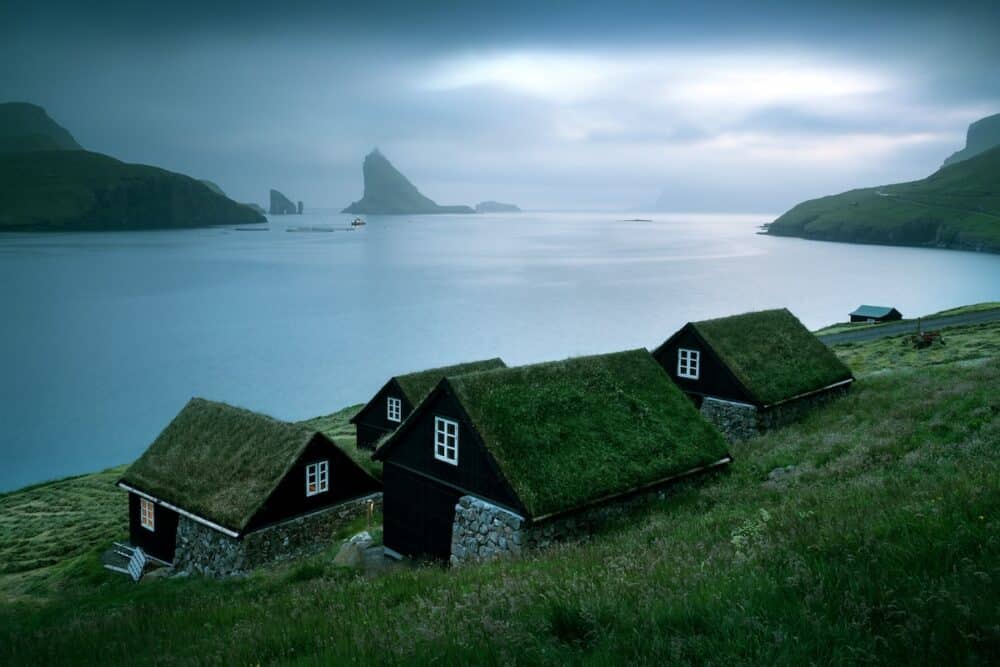
Tromsø, Norway:
Tromsø, located in the Arctic Circle in northern Norway, is a captivating destination that is sometimes underrated despite its unique offerings.
Why is Tromsø is Underrated:
Tromsø is situated within the Arctic Circle in the far north of Norway. Its remote location, while part of its charm, can deter travellers who prefer more easily accessible destinations.
Some travellers might avoid Tromsø due to the misconception that it’s unbearably cold year-round. Tromsø has a milder climate than expected, especially during the summer months.
What is Tromsø like?
Tromsø is renowned for its stunning Arctic landscapes, including snow-covered mountains, fjords, and the spectacular Northern Lights (Aurora Borealis) that dance across the sky during the winter.
Despite its remote location, Tromsø is a stunning culturally rich city with various cultural events, festivals, and an active arts scene.
It’s often referred to as the “Gateway to the Arctic.” Tromsø is an outdoor enthusiast’s paradise, offering various activities such as dog sledding, snowmobiling, ice fishing, and whale watching.
Things to Do in Tromsø:
- Aurora Hunting:
Tromsø is one of the best places in the world to witness the Northern Lights, with many guided tours.
- Arctic Wildlife:
Take a boat tour to spot Arctic wildlife, including whales, seals, and seabirds, with the possibility of encountering reindeer and huskies on the islands surrounding Tromsø.
- Tromsø’s Arctic Cathedral:
Visit the iconic Arctic Cathedral, a striking piece of modern architecture, and enjoy its stunning interior illuminated by the Midnight Sun during the summer.
- Polaris:
Explore Polaria, an Arctic-themed visitor centre with interactive exhibits, seal feeding sessions, and an Arctic aquarium.
- Tromsø Bridge:
Walk across the Tromsø Bridge, which connects the mainland with the island of Tromsøya, offering picturesque views of the city and surrounding landscapes.
- Museums:
Explore Tromsø’s museums, such as the Tromsø Museum, which provides insights into the natural and cultural history of the region.
- Hiking:
Enjoy the picturesque hiking trails around Tromsø, especially during the summer months when the landscapes are green and lush.
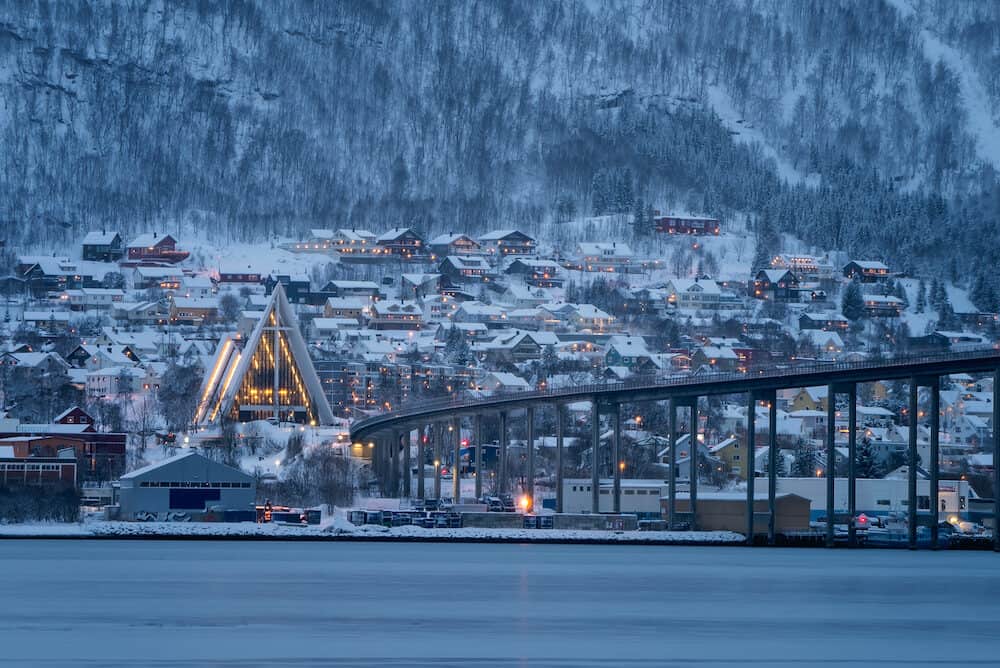
Bruges, Belgium:
Bruges offers a delightful blend of historical charm, cultural richness, and culinary indulgence. While it may be considered one of the underrated European cities, it provides an intimate and authentic experience, making it an ideal destination for travellers seeking a quieter yet enchanting escape.
Why is Bruges underrated?
Bruges is relatively tiny compared to more prominent European capitals and tucked away in northwestern Belgium.
Travellers often prioritize larger cities or more well-known destinations. While Bruges attracts tourists, it’s often viewed as less crowded than significant cities. However, some travellers may still perceive it as a busy destination.
What is Bruges like?
Bruges is known for its well-preserved medieval architecture, cobbled streets, and scenic canals. It’s often called the “Venice of the North” due to its picturesque canals.
The city is a repository of European history, art, and culture, with its historic buildings, churches, and museums offering glimpses into the past.
It is famous for its Belgian chocolate and beer, numerous chocolate shops and local breweries, making it an ideal destination for indulging in culinary delights.
Things to Do in Bruges:
- Canal Tours:
Take a scenic canal boat tour to explore the city from the water, offering unique views of its architecture and history.
- Historic Architecture:
Stroll through the old town and admire the historic architecture, including the Belfry of Bruges, the Basilica of the Holy Blood, and the Market Square.
- Bruges Béguinage:
Visit the Bruges Béguinage, a tranquil retreat featuring picturesque white houses and a garden.
- Chocolate & Beer Tasting:
Indulge in Belgian chocolates at local chocolate shops and attend chocolate-tasting sessions to savour the rich and creamy delights.
Explore the world of Belgian beer by visiting local breweries and taverns. Be sure to try Trappist beers, Belgian ales, and lambics.
- Flemish Art:
Visit the Groeningemuseum to admire Flemish art, including works by the renowned Flemish Primitives.
- Minnewater Park:
Wander through Minnewater Park, known as the “Lake of Love,” with its swans and scenic surroundings.
- Climb the Belfry:
Climb to the top of the Belfry of Bruges for panoramic city views.
- Bruges Christmas Market:
Don’t miss the enchanting Bruges Christmas Market during the holiday season, transforming the city into a winter wonderland.
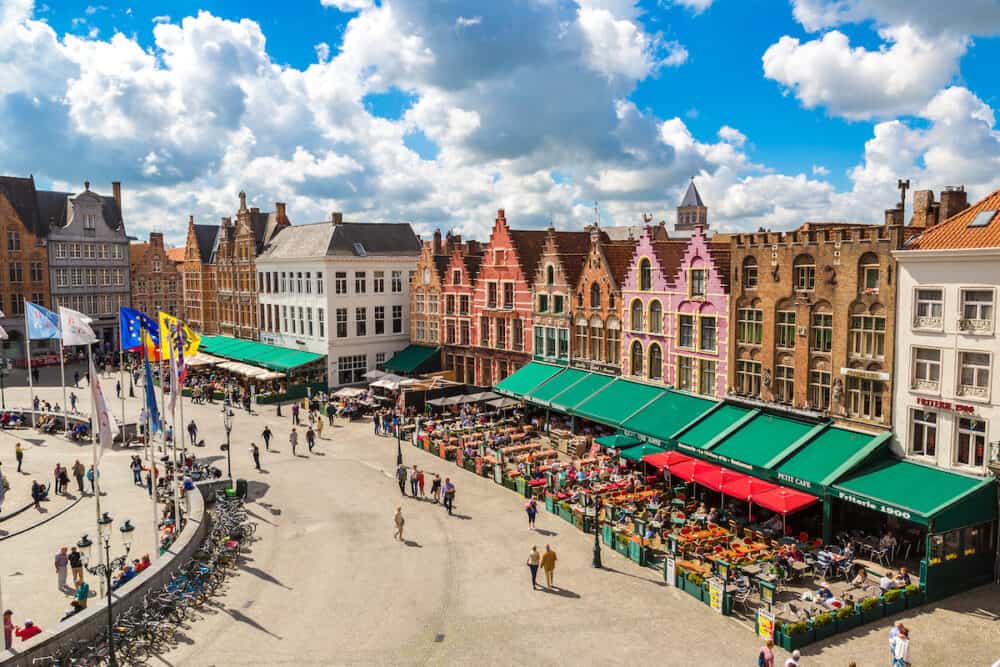
Final Thoughts for Most Underrated Places In Europe
Exploring new and lesser-known European destinations offers a world of untapped potential often overshadowed by popular tourist hotspots.
While it’s understandable that travelers gravitate towards places with well-developed tourist infrastructures for convenience and familiarity, this approach can mean missing out on unique experiences.
Venturing off the beaten path in Europe leads to encounters with vibrant cultures, deep historical insights, stunning natural landscapes, and unique experiences hidden in Europe’s more secluded corners.
This article aims to shed light on some of Europe’s most underrated cities and countries, offering a glimpse into their unique charm and the plethora of activities they offer to adventurous travelers.



